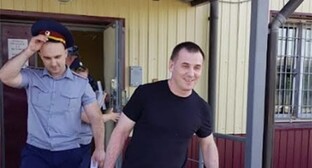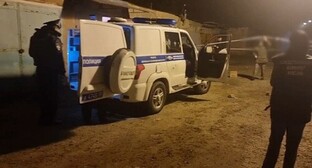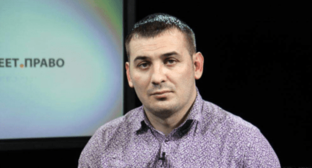29 April 2003, 16:33
Makhachkala
Capital of Dagestan, 2,166 km south-east of Moscow. Located on the western coast of the Caspian Sea, on a narrow stripe of the Primorskaya Lowland, at the bottom of Mount Tarkitau, near foothills of the Greater Caucasus. The climate is transitional from maritime to continental. Winter is mild; the temperature in January averages to -1?С. Summer is very warm, dry; sea winds are rather often; July temperature averages to 24?С. Autumn is mild, predominantly warm and dry. Precipitations of about 400 mm a year. Seaport. Railway station in the Rostov-on-Don - Baku line. Highway (Rostov-on-Don - Baku). Airport. Population (1992 est.) 339.3 thousand, (1897 est.) 9.8 thousand, (1926 est.) 34 thousand, (1939 est.) 87 thousand, (1959 est.) 119 thousand, (1970 est.) 186 thousand, (1979 est.) 251 thousand.
The city was founded in 1844 as the Russian fortification of Petrovskoye (near the place where there was a camp of Russian troops led by Peter I in August, 1722); mountaineers prefer the name of Andzhi-Kala (literally meaning 'flour fortress'). In 1857, the settlement round the fortress received the status of a city and the name of Petrovsk-Port. The artificial harbour and the port were built here in 1861-1870. Connection of the city with Vladikavkaz and Baku by railways(1894-1896) contributed to considerable increase of the port capacity. In the late 19th and the early 20th centuries, Petrovsk-Port acquired an oil refining and a barrel factories, a cotton mill and a tobacco factory, as well as railway workshops.
During the Civil war, from summer of 1918 to the beginning of 1920, the city was occupied by German and Turkish troops; from January to March 1920, there were English troops and units of the White Army here. Units of the 11th Red Army entered Petrovsk-Port on March 30, 1920. In May, 1921, the Dagestan revolutionary committee decided to make it the capital of the Dagestan АSSR and gave it the name after Magomed-Ali Dakhadayev (Makhach), an active participant of the struggle for the Soviet Power in Dagestan.
The city was heavily destroyed by the strong earthquake of May 14, 1970.
Present Makhachkala has an advanced machine industry and metal working (production of welding equipment, separators, multiscoop dredges, gears, equipment for food-processing industry, etc.), chemical industry, light industry (balbriggan, etc.), flavouring industry (including fish, canning, wine-making industry), production of building materials (fibre glass, lime-and-sand brick, ferro-concrete constructions). The commercial harbour of Makhachkala tranships cargoes, primary petrochemicals, arriving from Baku, Krasnovodsk, Astrakhan, etc.
Makhachkala is a research centre of the Russian Academy of sciences. University. Institutes: polytechnic, agricultural, medical, pedagogical. 5 theatres, including the Avar and Kumyk Musical Drama, Russian drama, puppet-show. Republican museum of local lore. Museum of fine arts.
Makhachkala is a mud-bath and seaside climate health resort. Primary natural medical factors, in addition to climate, are mineral waters, including sodium sulphate-hydrocarbonate one (bottled as Makhachkala, a healing table-water), and sulphide silt mud of salty lakes (Makhachkala, Bolshoye and Maloye Turali). Sandy sea beaches.
The first general city-planning scheme was developed in 1931, further lay-outs were made in 1938, 1961, 1973. Makhachkala has a gridiron pattern of streets: some of them stretch in parallel to the seaside, the other at the right angle to it. City abounds in green of numerous squares, gardens and parks. There are many one- and two-storeyed houses of dark yellow limestone built at the late 19th and the early 20th centuries. Despite increased seismic danger, multi-storeyed buildings of 9, 12 and 14 floors are built. Constructions decorated by national ornamental patterns are widely spread (arch entrance into the city park, etc.) The central part of the city is adjacent to the sea. Primorsky Boulevard goes along the seaside (since 1962) and has the monument to Suleyman Stalsky (1949, sculptor K.N. Askar-Sarydzha, architect А.М. Alkhazov) and a musical drama theatre (1967, architects G.Y. Movchan, V.D. Krasilnikov, S.K. Galadzheva). At the end of the thoroughfare, Prospekt Lenina, there is the compositional city centre, Ploshchad Lenina, with the Government House (1967, architect Alkhazov), a medical institute (1935, G.S. Tegkayev), the Dagestan Historical and Architectural Museum, monuments to V.I. Lenin (1960, sculptor Z.I. Azgur, architect G.А. Zakharov) and the poet Gamzat Tsadasa (1957, sculptor Askar-Sarydzha, architect Alkhazov). In the square near Ploshchad Lenina, there is a monument to Dagestan Bolsheviks, shot down by White Guards in 1919; at the entrance into the city garden, there is a monument to V.I. Lenin (V.V. Kozlov, architects V.A. Shuko, V.G. Gelfreykh); at the centre of Privokzalnaya Ploshchad, there is a monument to the Dagestan revolutionary, Makhach Dakhadayev (1971, sculptor Askar-Sarydzha, architect G.A. Ganiyev); at the front entrance to the Leninsky Comsomol Park, there is a memorial to soldiers perished during the Great Patriotic War of 1941-1945 (sculptors Y. Pomer, R. Stepanov, S. Kulev, architect V. Bederov, the chief of the creative group being the artist А. Emirbekov); in the parkway dividing Kirov Prospect, there is a monument to S.M. Kirov (1975, sculptors B.A. Tanayev, B.P. Totiyev, D.A. Tsorayev, F.E. Makhmudov).
At the distance of 5-6 km of Makhachkala, on Mount Tarkitau, there is the settlement of Tarki, located on the site of Semender, a legendary Khazar city existing in the 7th -10th centuries and being the capital of the Khazar kaganate until about 723; later, it was an aul (village) of Tarki with 3 mosques. Above it, there was a fortress of Burnaya (1821); its observation post has still remained on the steep rock reinforced by stonework. At the distance of 18 km south-west of Makhachkala, there is a balneal health resort of Talgi.




